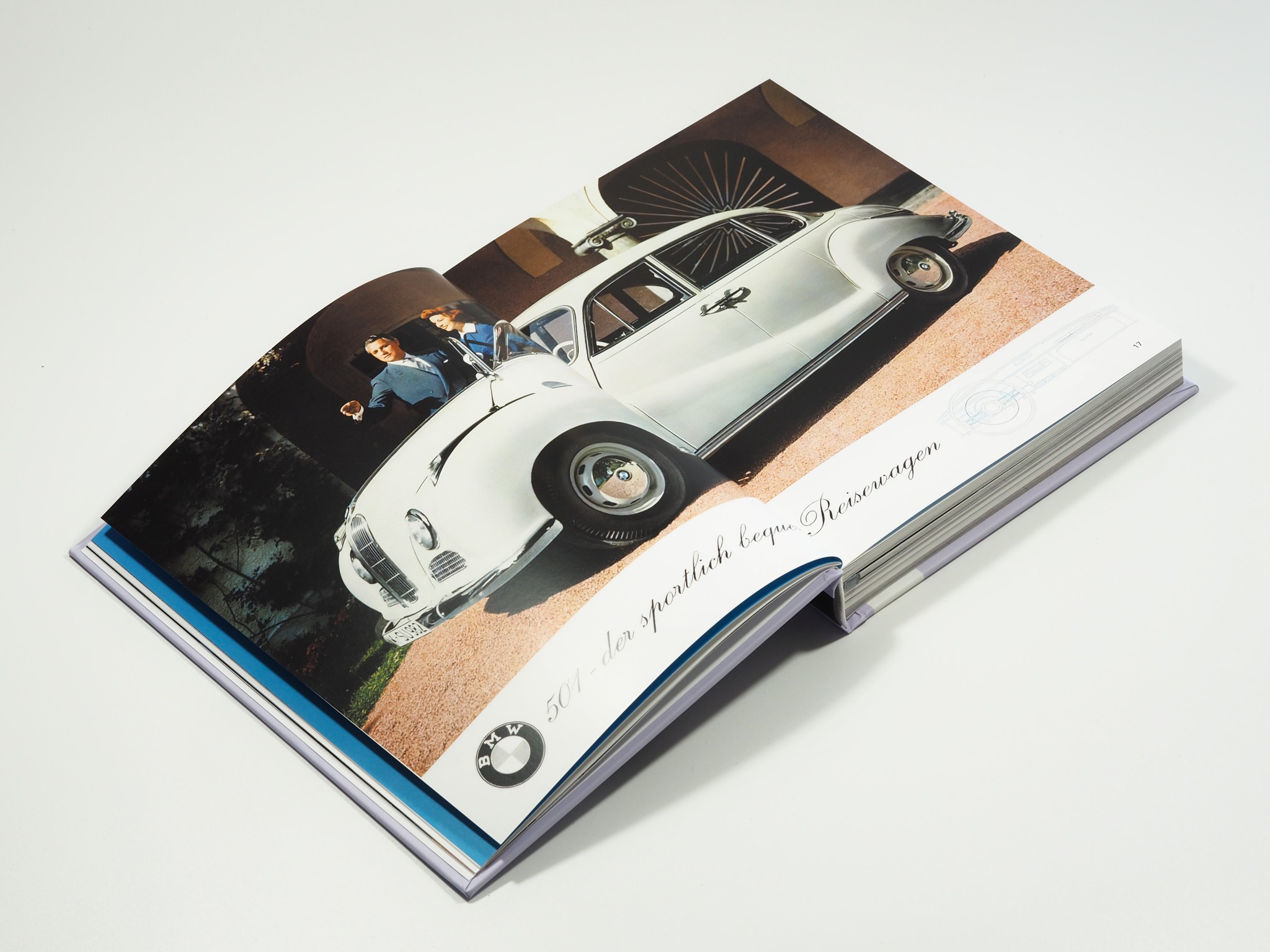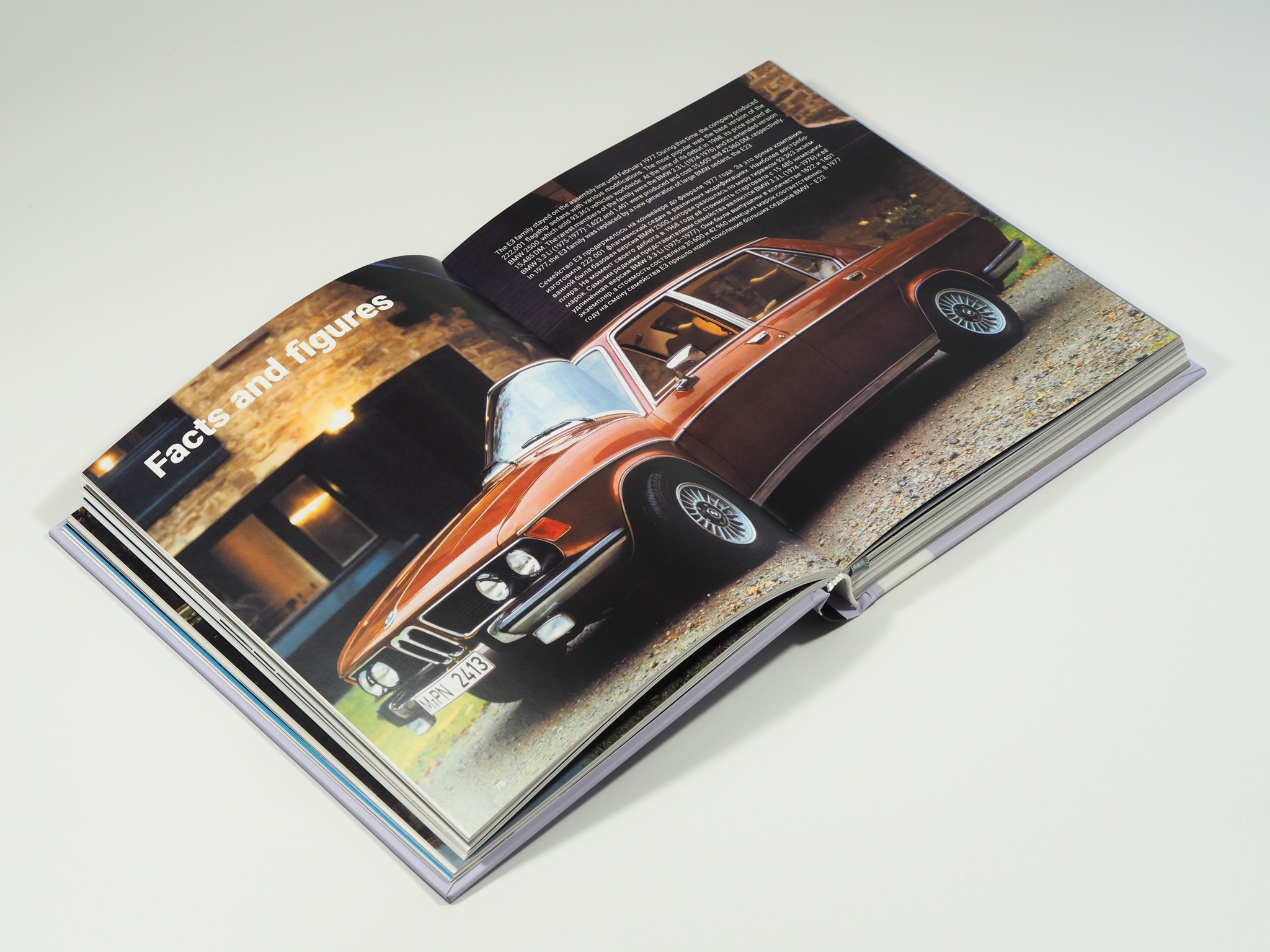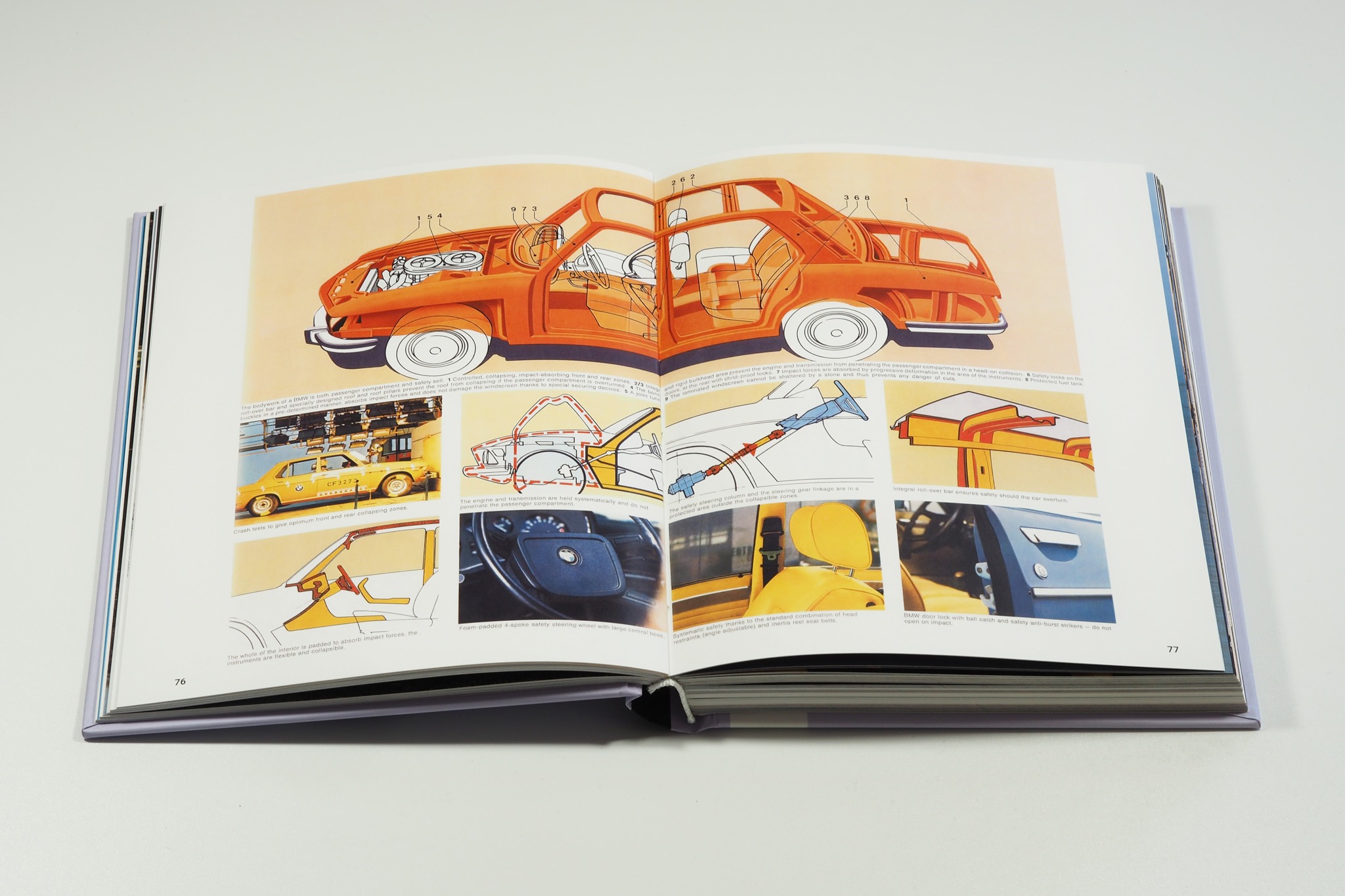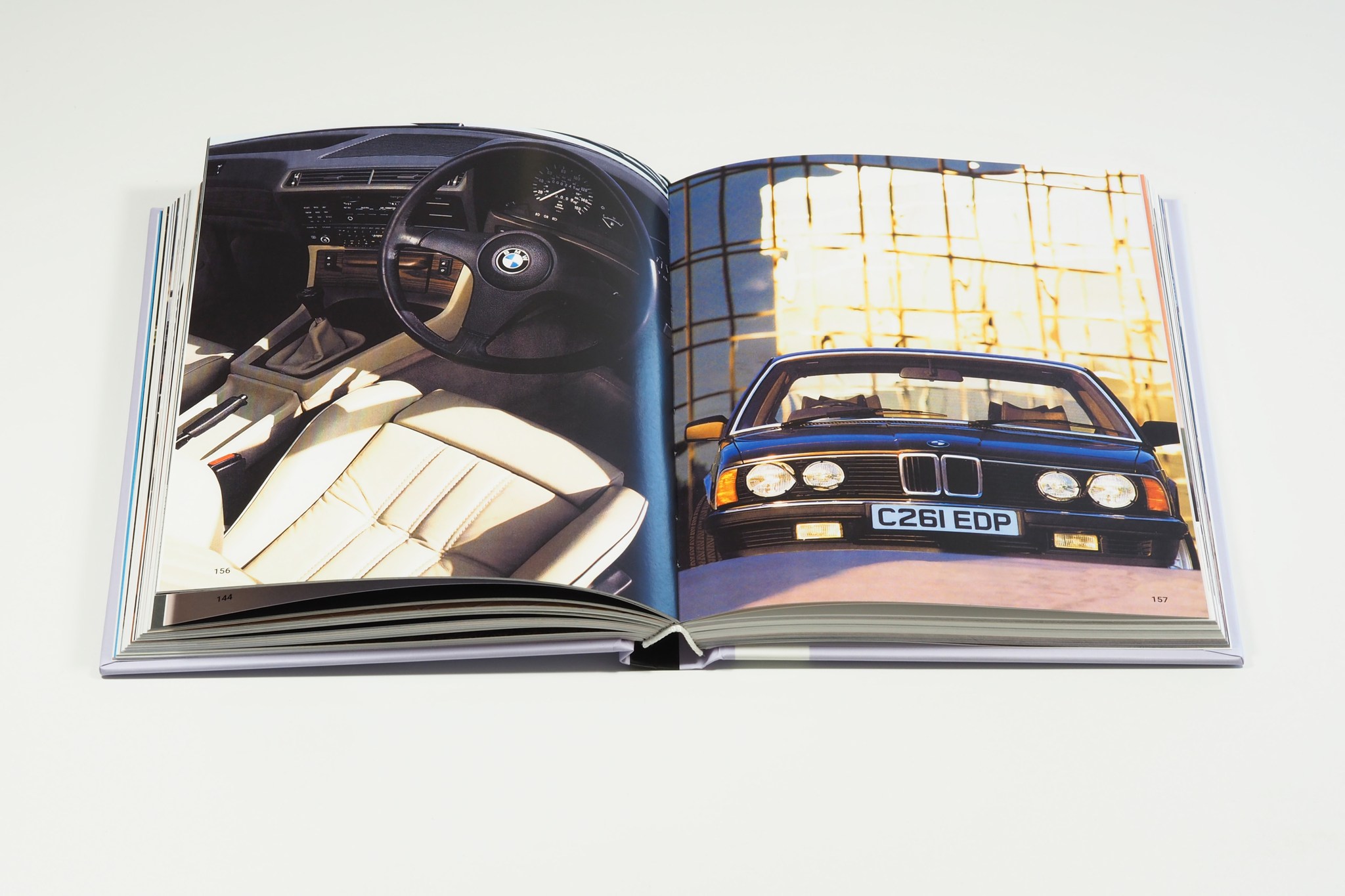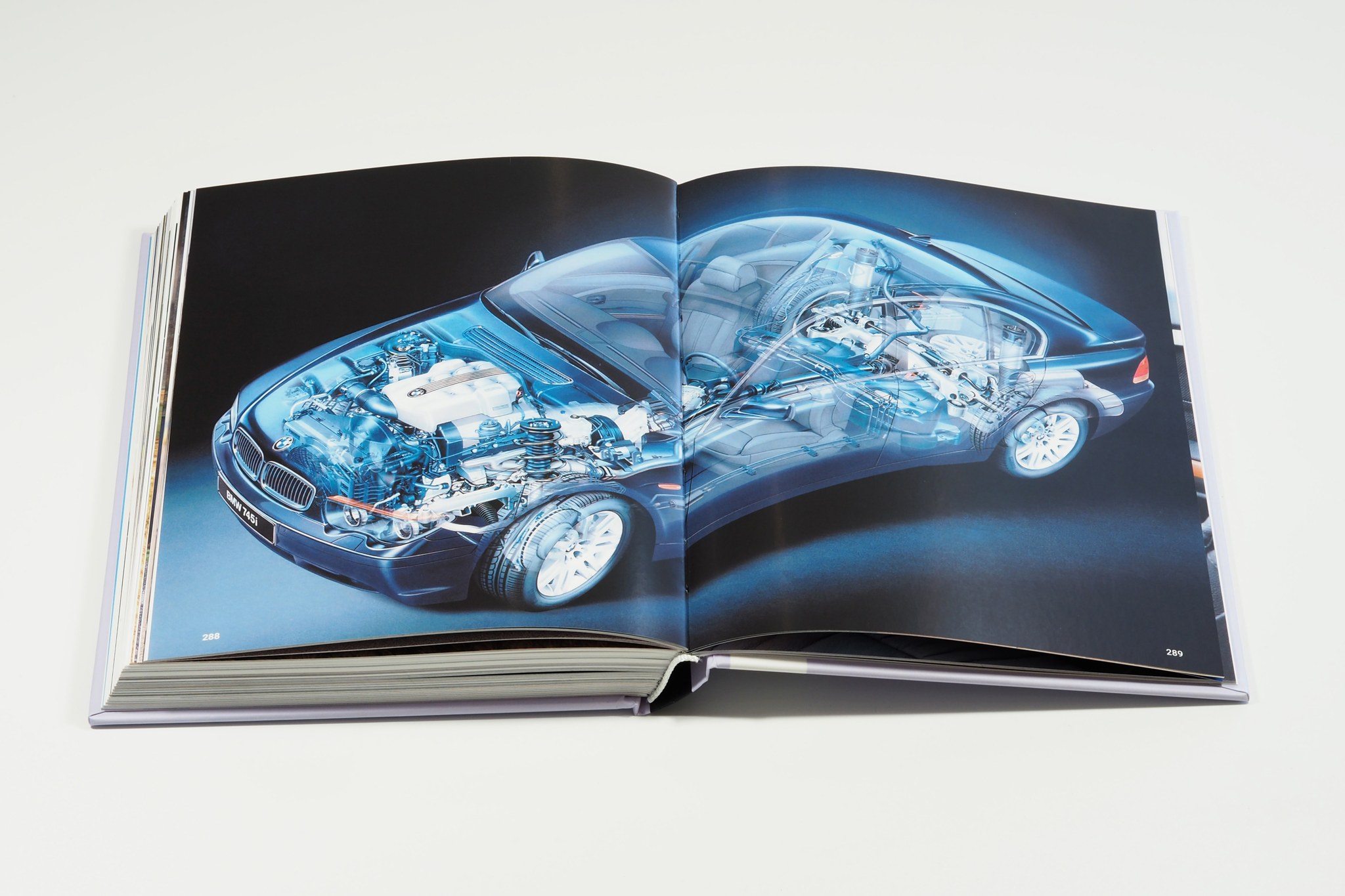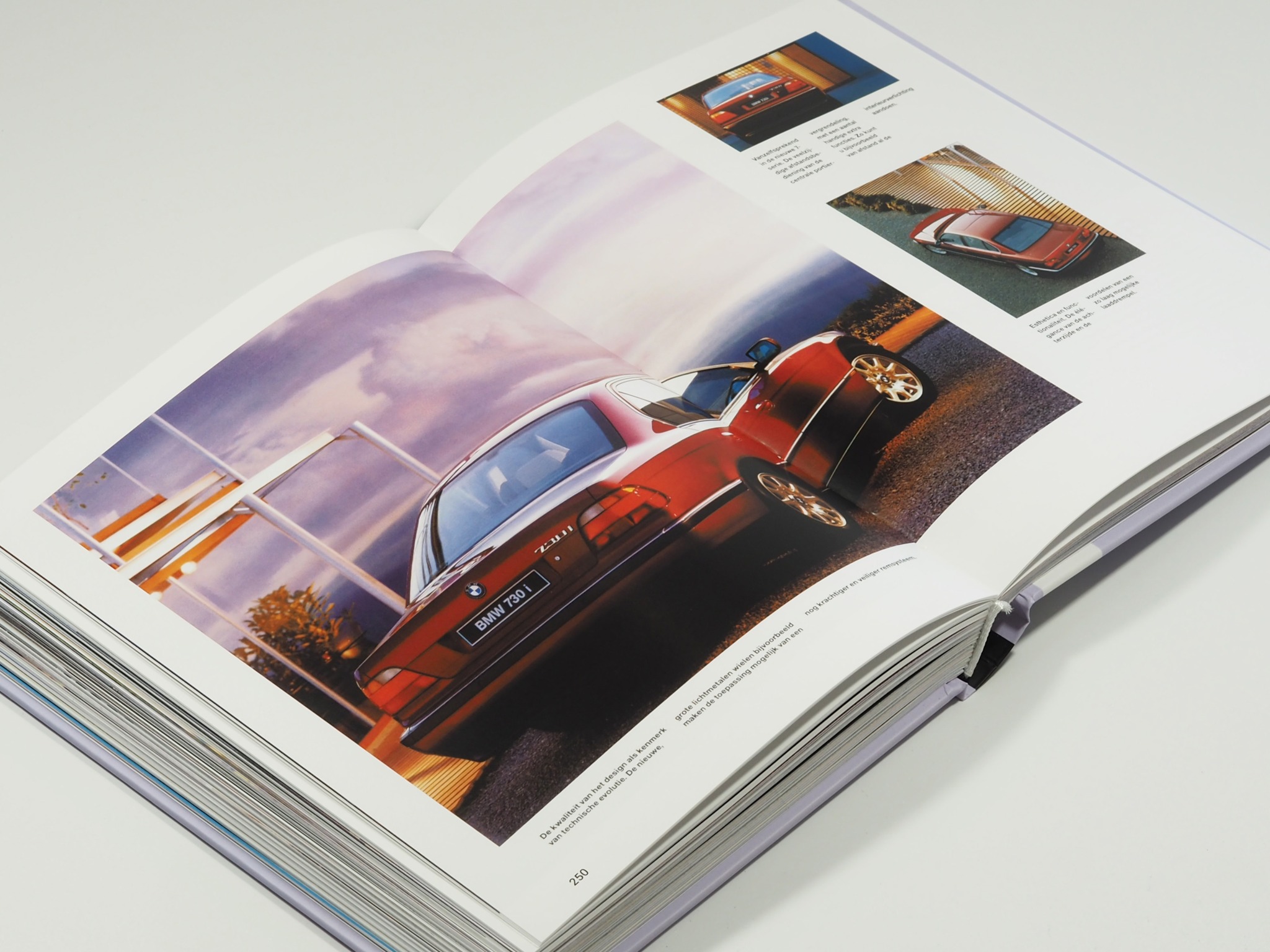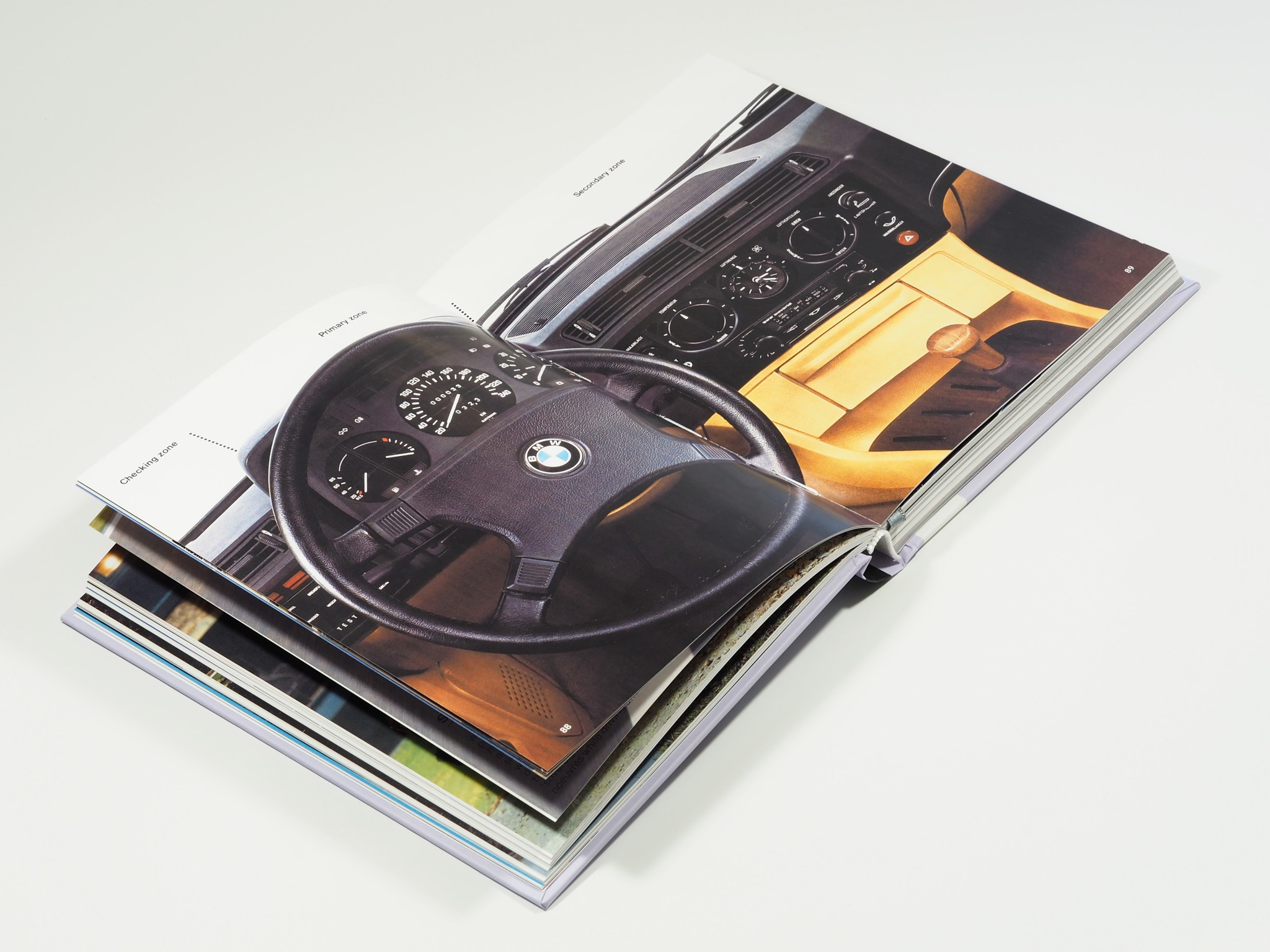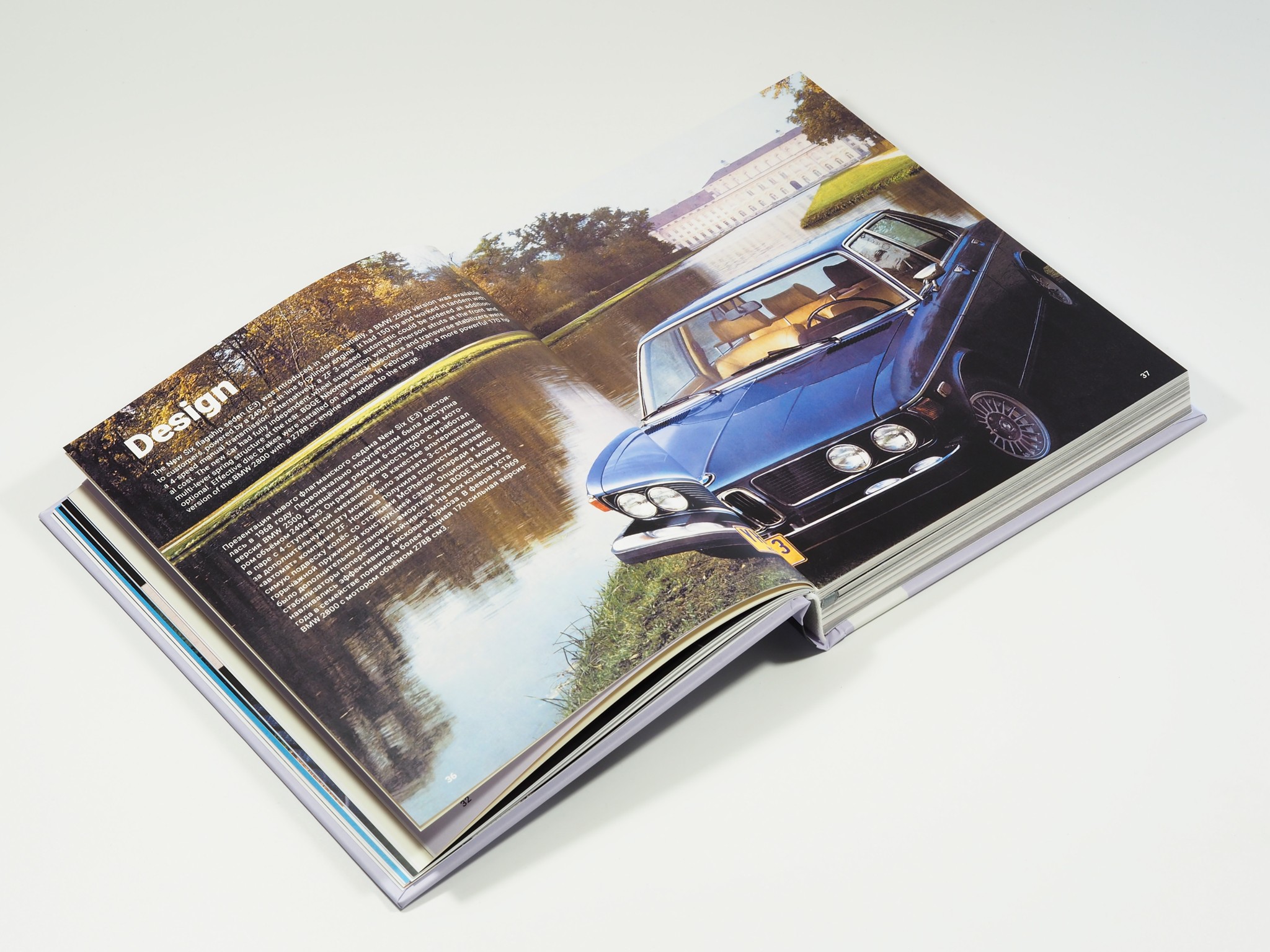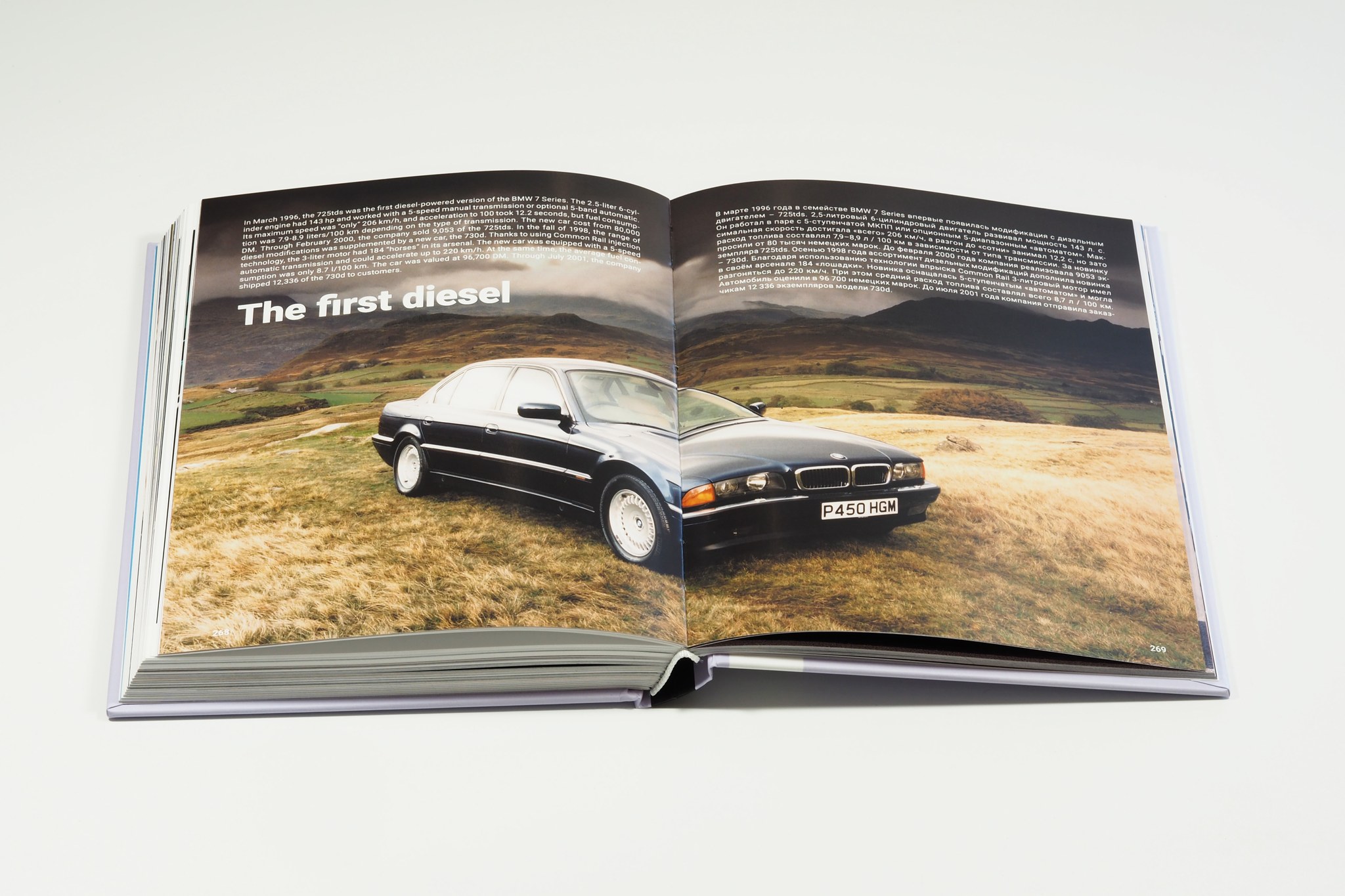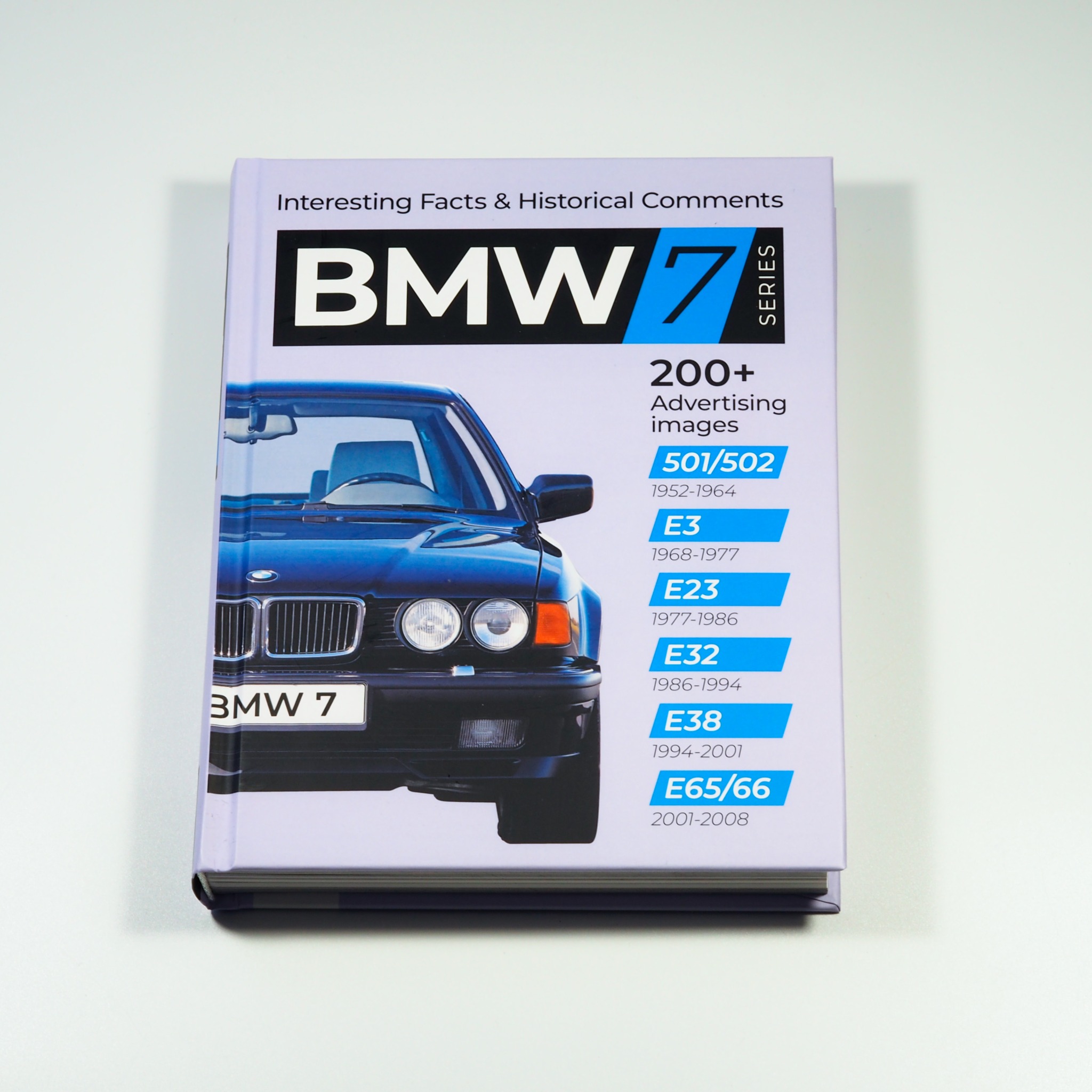Опис
BMW 7 Series Hardcover book (fragment of the text)
The active development of transportation engineering in Germany in the first half of the 20th century led to the emergence of a large number of companies, including Gustav Otto’s Bayerische Flugzeugwerke and Karl Friedrich Rapp’s Rapp-Motorenwerke.
In 1922, they joined forces and the newly formed company was named Bayerische Motoren Werke (Bavarian Motor Works) or BMW for short. A year later, BMW introduced its first motorcycle, and five years after that, in October 1928, the company acquired the Dixi car factory, which produced small cars under license from the British firm Austin. However, neither the design of the BMW Dixi 3/15 nor the subsequent modernized version of the BMW 3/20 satisfied the ambitious plans of the company’s management.
Therefore, in 1933 the company created first its own compact 1.2-liter six-cylinder engine with an output of 30 hp, and then its own car, the BMW 303. In the summer of the same year, engineer Fritz Fiedler, who had previously worked at Horch, joined the company.
He became head of the design department and remained in that position for more than 30 years. In the decade before the war, BMW managed to significantly expand its model range and win many fans.
After the war, BMW found itself in a difficult position. Some of the company’s plants were destroyed by Allied aircraft, and the Eisenach plant was in an area controlled by Soviet troops. It was possible to resume car production only in 1952 at the headquarters in Munich.
The management made its bet on the 501/502 family models. Equipped with 6- and 8-cylinder engines, they were too far ahead of the German economy’s development and sales remained very modest. An attempt to offer customers a licensed Italian Isetta microlight car did not bring the expected profits, and the release of the compact BMW 600 model resulted in even greater financial losses.
In 1958, all of this almost led to bankruptcy and to the transfer of control to Daimler Benz AG. Fortunately, businessman Herbert Quandt came to the rescue, whose investment allowed the company to maintain its independence. The debut of the New Class family of mid-size cars in 1962 was fateful.
With its appearance, BMW began its triumphant return to automotive Olympus. The New Class laid the groundwork for all subsequent families, including the BMW New Six (E3) “large sedans” and the first generation of the flagship 7 Series (E23), which debuted in 1977. You will learn about these and subsequent 7 Series models on the pages of this book.
Despite the restrictions imposed after the war that affected German companies and their production plans, BMW management hoped to return to passenger car production. The new model was supposed to be the successor of the BMW 326, which was popular in the 1930s. Work on the new car began under conditions of strict secrecy in the fall of 1948.
The prototype of the luxurious and expensive sedan, designated BMW 501, was shown to the public at the IAA Motor Show in Frankfurt in 1951. The appearance of the first post-war BMW model aroused the keen interest of potential buyers, and mass production of the new car started in November 1952.
Read the continuation of BMW 7 Series story in the book.
Other books about history of BMW:

